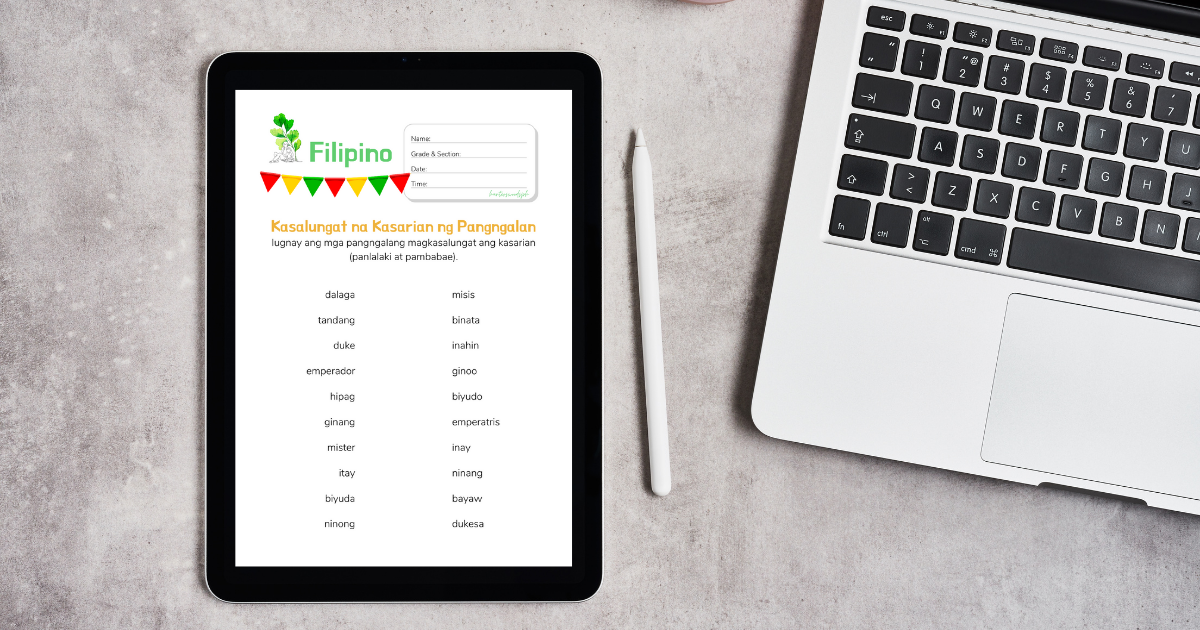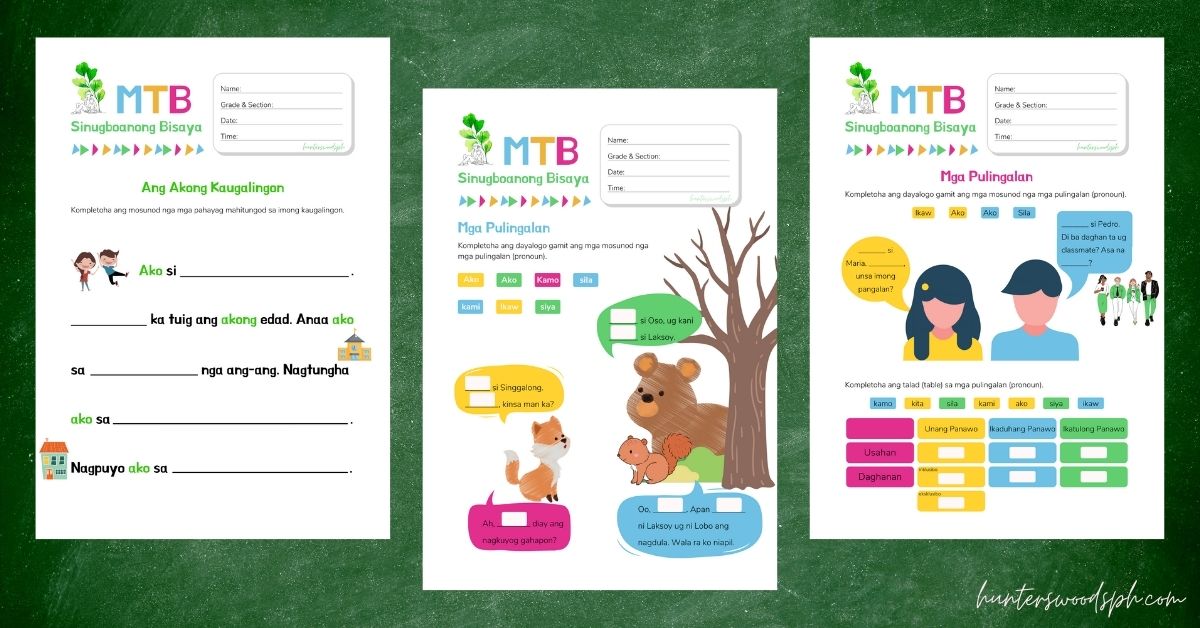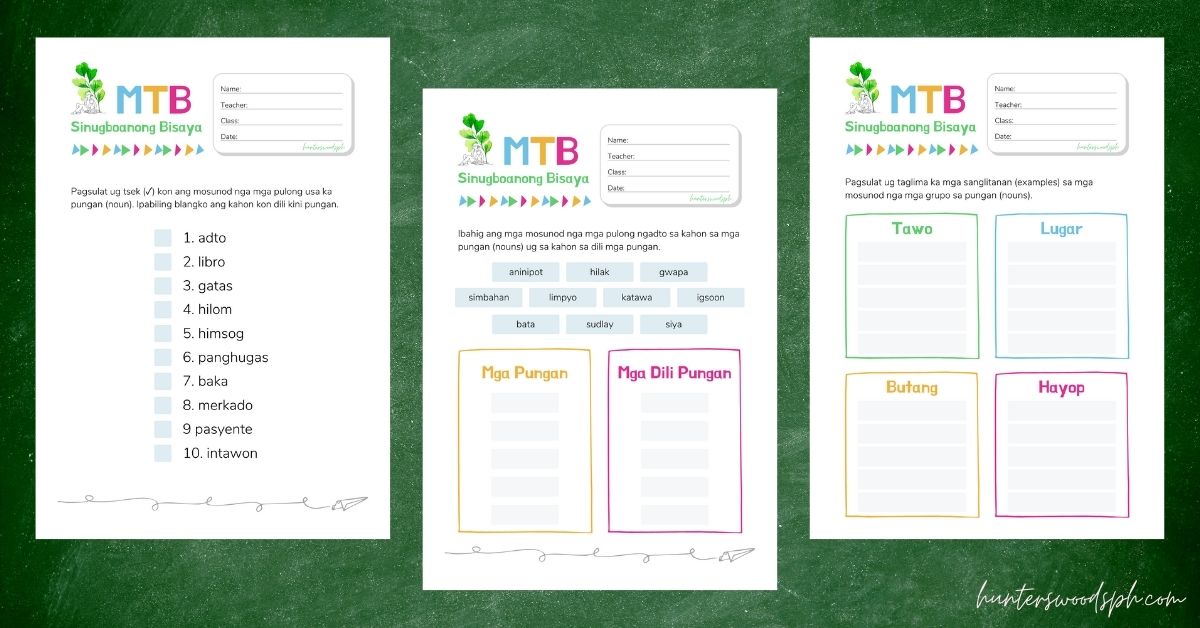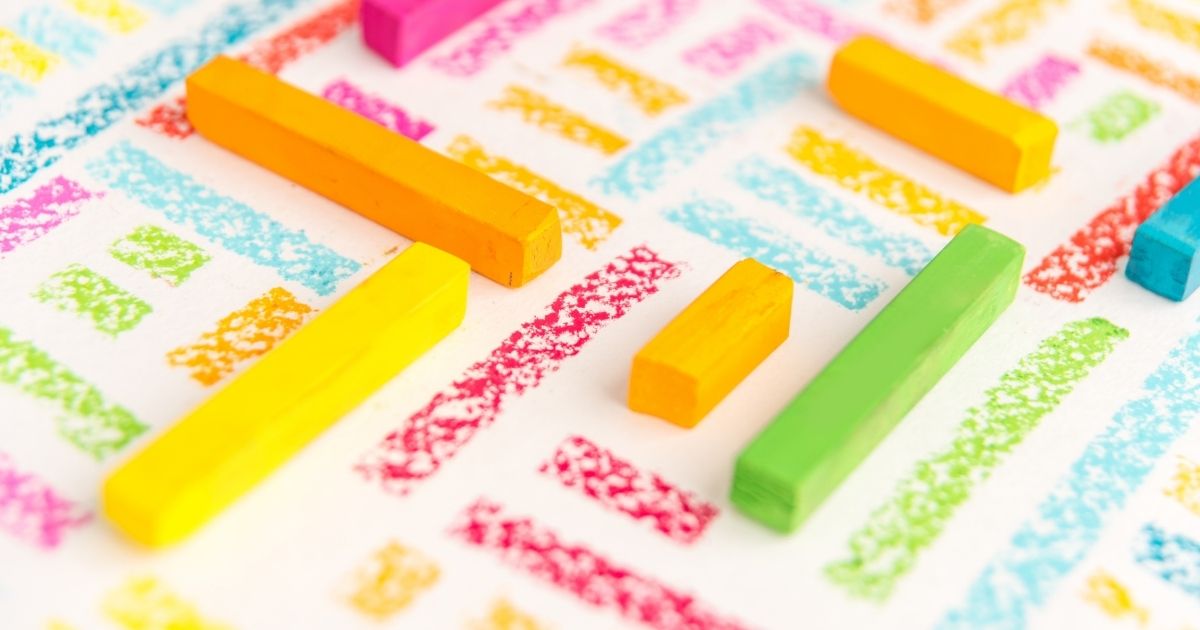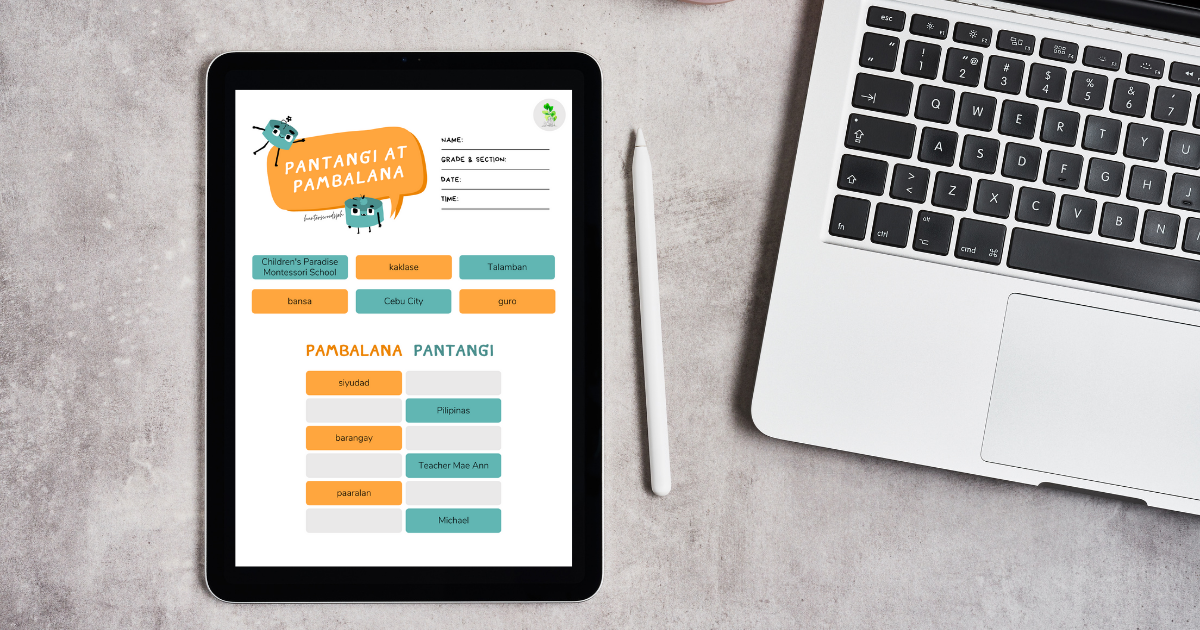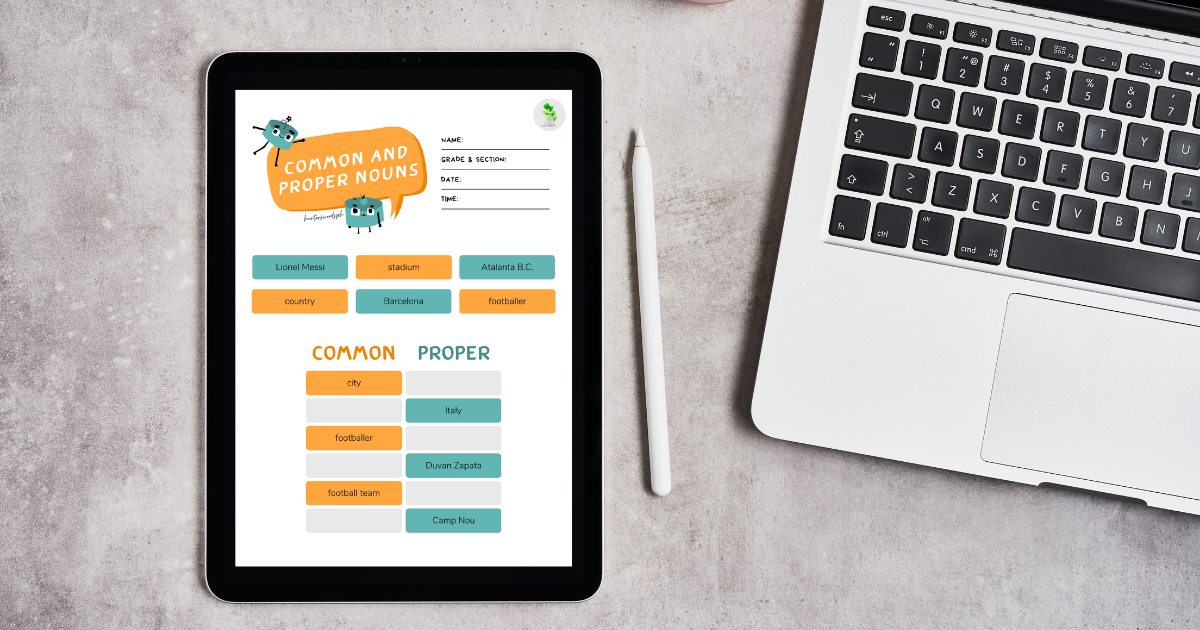Nouns in Filipino can be isahan (singular), dalawahan (dual), or maramihan (plural). Here’s a quick lesson, quiz, and free worksheets on kailanan ng pangngalan.
Blog
Kasalungat na Kasarian ng Pangngalan: Pambabae at Panlalaki (Filipino Lesson and Worksheets)
Examples of kasalungat na kasarian ng pangngalan (opposite noun genders) and worksheets on matching and identifying corresponding pangngalang pambabae at panlalaki (feminine and masculine nouns).
Kasarian ng Pangngalan: Filipino Lesson and Worksheets for Kindergarten and Grade 1-3
A quick Filipino lesson and four worksheets on mga kasarian ng pangngalan for kindergarten, Grade 1, Grade 2, and Grade 3. Or write your own nouns in the bonus blank worksheet!
Mga Pulingalan (MTB Sinugboanong Bisaya Lesson and Worksheets)
Introduction to pulingalan (pronouns) and three worksheets to help master Sinugboanong Bisaya personal pronouns. Includes pulingalan Bisaya to Tagalog/English.
Mga Salitang Pareho ang Baybay Ngunit Iba ang Bigkas at Kahulugan: Filipino Lesson and Worksheet
An example list and worksheet of mga salitang pareho ang baybay ngunit iba ang bigkas at kahulugan (Filipino words that have the same spelling but different pronunciation and meaning).
Mga Pungan: Pag-ila ug Paghimo ug Sanglitanan (MTB Sinugboanong Bisaya)
Nouns are called pungan in Sinugboanong Bisaya. Identify nouns from non-nouns and give examples (paghimo ug mga sanglitanan) for each group of nouns.
Montessori Geometry: Positions of a Single Line and Relationships Between Two Lines (Lesson and Quiz)
Learn about the positions of a single line (horizontal, vertical, and oblique) and relationships between two lines (parallel, intersecting, convergent, divergent, oblique, and perpendicular) as inspired by the Montessori geometry curriculum.
Montessori Art Appreciation: Famous Paintings Every Kid Should Know
These are some of the world’s most famous and most beloved paintings that kids (and adults!) should know. Can you name all of them?
Montessori Filipino Lesson and Worksheet: Pantangi at Pambalana
A quick definition of mga pangngalang pantangi at pambalana (proper and common nouns) and two interactive worksheets (sorting and giving examples) to help you master this Filipino lesson.
Common and Proper Nouns (Montessori English Language Lesson and Worksheet)
A quick definition of common and proper nouns and two interactive worksheets (sorting and giving examples) to help you master this English language lesson.


